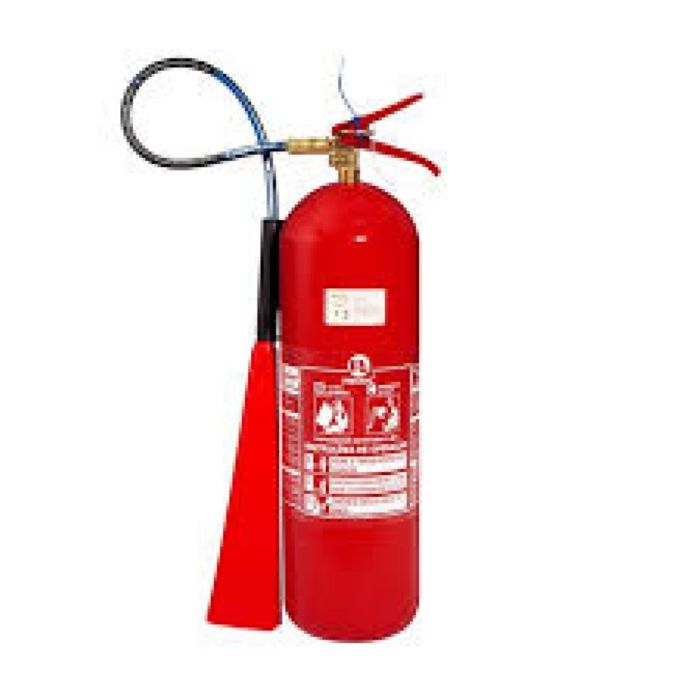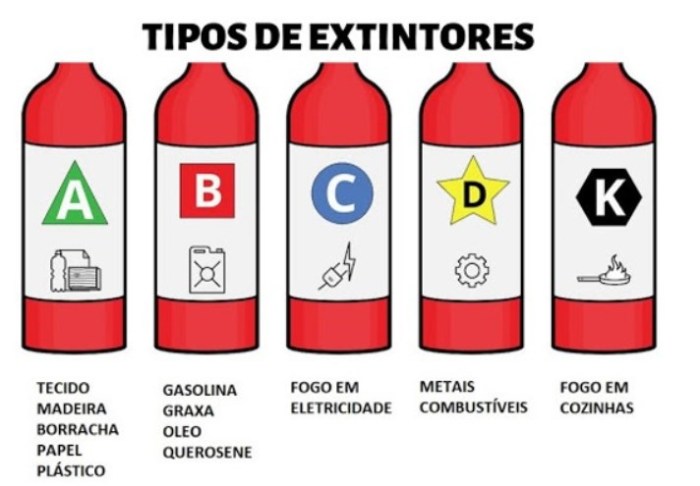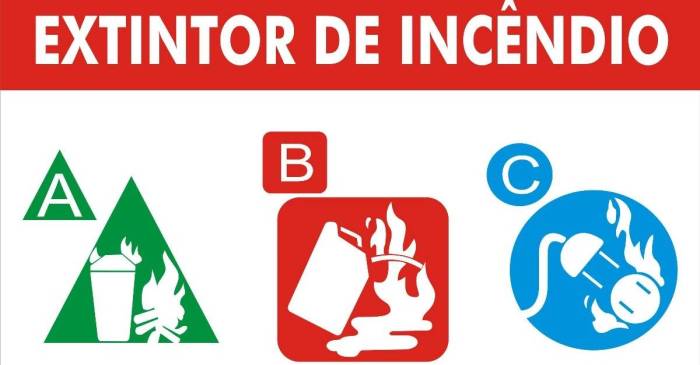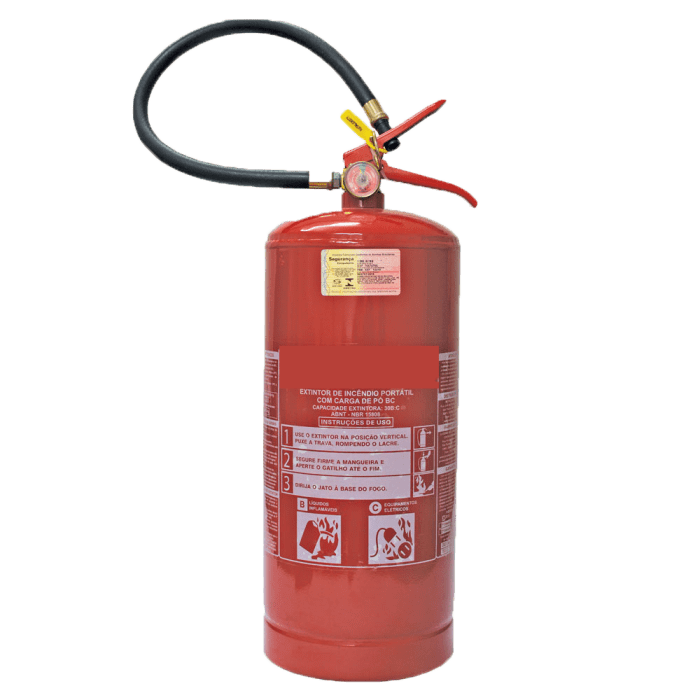Extintor de incendio classe c – Unveiling the world of Class C fire extinguishers, this guide delves into their purpose, components, operation, and applications. Learn how these specialized extinguishers effectively combat electrical fires, ensuring safety in homes, workplaces, and beyond.
Class C fire extinguishers stand out with their unique design and effectiveness against electrical fires. Their specialized construction and extinguishing agents make them indispensable for protecting against the hazards of electrical equipment.
Introduction to Class C Fire Extinguishers: Extintor De Incendio Classe C

Class C fire extinguishers are specifically designed to extinguish fires involving flammable gases, such as propane, butane, and natural gas. These fires are commonly encountered in industrial settings, laboratories, and kitchens.
Class C fire extinguishers work by displacing oxygen in the air around the fire, effectively smothering it. The extinguishing agent used in these extinguishers is typically carbon dioxide (CO2), which is a colorless, odorless, and non-flammable gas.
Types of Fires Extinguished by Class C Fire Extinguishers
- Fires involving flammable gases, such as propane, butane, and natural gas
- Electrical fires involving energized equipment
Construction and Components of Class C Fire Extinguishers

Class C fire extinguishers are designed specifically to combat fires involving flammable liquids and gases. Their construction and components are meticulously engineered to effectively extinguish these types of fires while ensuring safety during operation.
The construction of Class C fire extinguishers typically involves a cylindrical pressure vessel that houses the extinguishing agent. The pressure vessel is usually made of durable materials such as steel or aluminum, providing structural integrity and resistance to corrosion. The vessel is equipped with a discharge valve and a hose or nozzle for directing the extinguishing agent towards the fire.
Materials Used in Construction
- Steel:Steel is commonly used due to its strength, durability, and ability to withstand high pressures. It is suitable for storing the extinguishing agent under pressure and ensuring the integrity of the vessel.
- Aluminum:Aluminum is another popular choice for its lightweight and corrosion-resistant properties. It is often used in portable fire extinguishers due to its ease of handling.
- Brass:Brass is used for components such as valves and nozzles due to its resistance to corrosion and wear. It ensures the smooth operation of the extinguisher and prevents leakage.
Safety Features
- Pressure Relief Valve:A pressure relief valve is a critical safety feature that prevents excessive pressure buildup within the extinguisher. In case of over-pressurization, the valve releases excess pressure, ensuring the safety of the operator and preventing potential damage to the extinguisher.
- Locking Mechanism:Class C fire extinguishers often incorporate a locking mechanism to prevent accidental discharge. This feature is especially important in public spaces or workplaces where unintended activation could pose a hazard.
- Discharge Indicator:Some extinguishers may have a discharge indicator that shows the amount of extinguishing agent remaining. This allows the operator to assess the extinguisher’s capacity before using it, ensuring its effectiveness in extinguishing the fire.
Operation and Use of Class C Fire Extinguishers

Class C fire extinguishers are designed to combat fires involving flammable liquids and gases. Their proper operation and use are crucial for effective fire suppression. This section provides a comprehensive guide to the operating procedures, step-by-step instructions, and safety precautions for Class C fire extinguishers.
Operating Procedures, Extintor de incendio classe c
Operating a Class C fire extinguisher requires a specific set of steps to ensure safety and effectiveness:
- Pull the pin:Remove the safety pin located at the top of the extinguisher to activate it.
- Aim at the base of the fire:Point the nozzle towards the base of the fire, where the fuel is most concentrated.
- Squeeze the lever:Depress the lever to release the extinguishing agent.
- Sweep side-to-side:Move the nozzle back and forth across the base of the fire, ensuring even distribution of the agent.
- Repeat until extinguished:Continue sweeping the nozzle until the fire is completely extinguished.
Safety Precautions
Using Class C fire extinguishers involves potential hazards that require strict adherence to safety precautions:
- Keep a safe distance:Stand at a safe distance from the fire to avoid potential explosions or flashbacks.
- Wear protective gear:Wear appropriate protective clothing, such as gloves and goggles, to minimize exposure to hazardous chemicals.
- Ventilate the area:Ensure proper ventilation after extinguishing the fire to prevent the buildup of toxic fumes.
- Inspect the extinguisher:Regularly inspect the fire extinguisher to ensure it is in proper working order and fully charged.
- Train and educate:Familiarize yourself with the operation and safety precautions of Class C fire extinguishers through training and education.
Maintenance and Inspection of Class C Fire Extinguishers
Regular maintenance and inspection of Class C fire extinguishers are crucial to ensure their reliability and effectiveness in case of an emergency. Neglecting these procedures can lead to potential hazards and compromise the safety of your workplace.
Checklist for Maintenance and Inspection
Conducting regular maintenance and inspection of Class C fire extinguishers involves following a detailed checklist:
-
-*Visual Inspection
Check for any physical damage, corrosion, or leaks on the extinguisher body, nozzle, and hose.
-*Pressure Gauge
Verify that the pressure gauge is within the indicated safe operating range.
-*Weight Measurement
Weigh the extinguisher and compare it to the specified weight indicated on the label.
-*Discharge Test
Penggunaan extintor de incendio classe c sangat penting untuk memadamkan api yang disebabkan oleh peralatan listrik. Untuk lebih memahami penggunaan bahasa kias, Anda dapat merujuk ke dover beach figures of speech . Hal ini akan membantu Anda mengidentifikasi dan menggunakan bahasa kias secara efektif dalam penulisan Anda, sehingga Anda dapat menyampaikan pesan dengan jelas dan menarik.
Perform a short discharge test to ensure the extinguisher is functioning properly and dispensing the extinguishing agent effectively.
-*Recharge and Maintenance
Have the extinguisher recharged and serviced by a qualified technician as per the manufacturer’s recommendations.
Applications and Limitations of Class C Fire Extinguishers

Class C fire extinguishers are designed to extinguish fires involving flammable gases. They are particularly effective in industrial and laboratory settings where flammable gases are used.
However, Class C fire extinguishers have limitations. They are not effective against fires involving ordinary combustibles, such as wood, paper, or cloth. Additionally, they cannot be used on fires involving electrical equipment, as the extinguishing agent can conduct electricity.
Importance of Selecting the Appropriate Fire Extinguisher
It is important to select the appropriate type of fire extinguisher for each specific application. Using the wrong type of fire extinguisher can be ineffective or even dangerous.
For example, using a Class C fire extinguisher on a fire involving ordinary combustibles could spread the fire. Similarly, using a water-based fire extinguisher on a fire involving flammable gases could create a dangerous explosion.
Standards and Regulations for Class C Fire Extinguishers

The design, construction, and use of Class C fire extinguishers are subject to various standards and regulations to ensure their safety and effectiveness. These standards are essential for maintaining uniformity, compatibility, and reliability in the manufacturing and operation of these extinguishers.
Adhering to these standards is crucial for several reasons. First, it ensures that the extinguishers meet minimum safety requirements, reducing the risk of accidents or injuries during use. Second, it facilitates compatibility between different extinguisher models, allowing for easy interchangeability and maintenance.
Third, compliance with standards demonstrates responsible management and adherence to industry best practices.
Organizations Responsible for Setting and Enforcing Standards
Several organizations are responsible for setting and enforcing standards for Class C fire extinguishers. These include:
- National Fire Protection Association (NFPA): NFPA 10, “Standard for Portable Fire Extinguishers,” provides comprehensive requirements for the design, construction, testing, and maintenance of fire extinguishers, including Class C extinguishers.
- Underwriters Laboratories (UL): UL 299, “Standard for Fire Extinguishers for Restaurant Cooking Equipment,” establishes specific requirements for Class C fire extinguishers used in commercial kitchens.
- Factory Mutual (FM): FM 6260, “Standard for Fire Extinguishers for Restaurant Cooking Equipment,” provides similar requirements to UL 299 but with a focus on industrial applications.
Case Studies and Examples of Class C Fire Extinguisher Use

Class C fire extinguishers are designed to combat fires involving flammable liquids and gases. Understanding how to use them effectively is crucial. This section will delve into real-world case studies, analyzing successful and unsuccessful uses of Class C fire extinguishers.
We’ll explore the factors that influenced the outcomes and extract lessons to enhance fire safety practices.
Successful Use Case:
In a chemical plant, a fire broke out in a laboratory due to a chemical spill. The quick-thinking lab technician grabbed a Class C fire extinguisher and aimed it at the base of the flames. The extinguishing agent effectively smothered the fire, preventing it from spreading and causing significant damage.
Factors contributing to the successful outcome included the technician’s prompt response, proper extinguisher selection, and correct application technique.
Unsuccessful Use Case:
In a warehouse, a fire ignited in a storage area containing flammable liquids. An employee attempted to extinguish the fire with a water-based extinguisher, unaware that it was ineffective against Class C fires. The water dispersed the burning liquids, spreading the fire and making it more challenging to control.
This incident highlights the importance of selecting the appropriate extinguisher for the specific type of fire.
Question Bank
What types of fires can Class C extinguishers put out?
Class C extinguishers are specifically designed to extinguish electrical fires involving energized electrical equipment.
How do Class C extinguishers work?
Class C extinguishers contain a non-conductive extinguishing agent, typically carbon dioxide or dry chemical powder, which smothers the fire and interrupts the electrical current.
Where should Class C extinguishers be placed?
Class C extinguishers should be placed near potential electrical hazards, such as electrical panels, servers, and machinery.
How often should Class C extinguishers be inspected?
Class C extinguishers should be inspected annually by a qualified technician to ensure proper operation and maintenance.